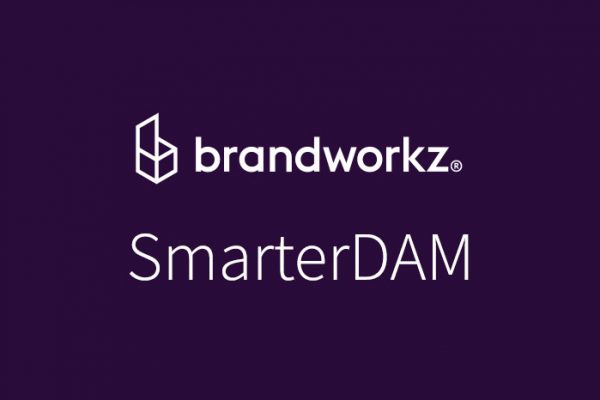Branding is pivotal to business success, but orchestrating a slick, effective branding strategy across multiple channels is far from a walk in the park.
As branding strategies multiply across channels, digital asset management (DAM) software is essential to ensuring that the right brand assets — images, videos, graphics, etc — are available to the right people, in the right place, at the right time.
The issue is the post-2000s explosion of SaaS, and cloud-based software has overwhelmed businesses with tools — the average enterprise uses 91 MarTech services, and in one survey, 43% of respondents said they waste time switching from one to another.1 2
Almost all of those MarTech services will require digital assets to fuel them, and almost all will have some form of DAM. If each of these DAMs is its own silo, you have a disaster recipe. Integrating DAMs with existing tools and platforms is essential to protecting your business.
With that said, here are six reasons why integrations are critical to your DAM software…
Suggested reading: Learn what other elements are critical to your brand management software with our handy guide, 6 Critical Elements of Brand Management.
To maximise your budget spend, and investment
Business investment in cloud-based SaaS has skyrocketed in the last decade, with cloud spending occupying 24% of IT budgets in 2020.3
Recent data found that only 45% of a business’s apps are used regularly, with over half of all licenses underutilised.4 This so-called “SaaS sprawl” has become a significant challenge for digitally transformed businesses.
As new platforms and tools are added to a company’s repertoire, existing tools are left to collect digital dust in the back of the digital tool shed.
Integrating your DAM with creative tools, CMS and eCommerce product directories helps tackle SaaS sprawl and maximise software budgets. Keep a single source of truth for all your brand assets and embed them in multiple apps without leaving the workflow.
- Businesses routinely waste money on sprawling SaaS workflows.
- Integrating tools squeezes more out of IT budgets.
- DAM integration makes a business’ digital asset library available across all channels without constantly downloading, uploading, and moving files around.
- By embedding your content in apps like your CMS or marketing automation software, you increase MarTech uptake and reduce user barriers.
To ensure seamless workflows
Siloed, non-integrated workflows don’t just waste money; they also waste time. We all know that age-old saying: time IS money.
Integrating the DAM into the MarTech stack ensures assets are made available to all relevant tools and saves time and money in the long run.
For example, integration with creative platforms such as Adobe Creative Cloud ensures a smooth transition between design and the front end. Integrating DAMs into CRMs ensures brand assets are available to B2B product and sales teams. Combining DAMs with product catalogues provides the availability of high-quality assets to website and eCommerce channels. The list goes on for almost every element of your MarTech stack!
- Siloing tools that could otherwise be integrated is an opportunity missed for your business.
- People are more productive when their workflows work smoothly and seamlessly (it’s in the flow).
- Relevant team members should be able to access brand assets with minimal red tape or time-wasting emails. In fact, this can be handled by your DAM’s permissions.
To provide easy access to approved, on-brand assets
DAMs create a single source of truth for all brand assets, from logos to infographics, graphs, videos and more.
Managing these resources from a single centralised platform makes sense on many levels. Not only does this simplify the task of brand management, but it saves so much time responding to all those annoying emails like “I’ve lost the most recent logo! Can you resend it, please?”
Integration takes content marketing productivity to the next level, providing easy access to approved brand assets ready to roll out to websites, social channels, product teams and anyone else who needs them.
- Accessing on-brand assets from within integrated CRMs, CMS, and other tools provides easy access to the same assets from multiple platforms.
- Digital & Print templates such as those offered by Brandworkz provide marketing teams with a powerful way to create on-demand artwork.
- Centralised brand guidelines ensure that all assets are used appropriately, regardless of what team uses them.
To enable brand consistency on all levels.
As businesses add new channels to their sales and marketing mix, brand consistency becomes increasingly essential.
Brand consistency helps ensure brand recognition, awareness, memorability and impact across websites, social, apps, and all other channels. This improves the customer experience and helps generate brand loyalty.
However, a consistent brand message is also vital to internal brand recognition. Interlinked branding workflows help keep things consistent from design to implementation. For example, the design team can create and edit images, sending them directly into the DAM, where they’re made accessible to marketing, sales and product teams. Likewise, web designers, social media managers and digital content creators can log in to the same platform to import brand assets into CMs, CRMs and eCommerce catalogues.
- DAM integration with CMS such as WordPress and CRMs such as Salesforce ensures brand consistency across all channels (Brandworkz does both).
- Integrating DAMs with design tools makes it easy to import new assets into the same centralised database (e.g. Brandworkz’s DAM platform integrates with the Adobe Creative Cloud).
- This enables brands to maximise the potential of DAMs, breaking down silos in the process. You’d even be able to automatically ingest purchased images from stock image libraries, centralising and streamlining your purchased assets.
To streamline your software usage
Ensuring you make the most out of your software licences is vital. Every minute spent on integration saves countless minutes moving data between different tools and platforms.
One thing is sure: businesses that focus on design and branding outperform their competitors. For example, McKinsey found that design-focused companies outrank others by 32% in revenue and 56% in growth, with huge brands such as Nike and Apple attributing much of their success to rock-solid branding strategies.5
Branding is fundamental to all channels, so integrating your DAM with tools that support marketing channels makes total sense. Mobilising your brand assets to your entire MarTech stack puts the flow in a workflow.
Well-integrated workflows cut time wasted on switching between tools, boosting productivity and making the entire process more efficient and less frustrating for your team.
- Streamlining software usage cuts time wasted on switching between tools.
- Teams can enjoy all-in-one, end-to-end workflows.
- Eliminate the need to copy, paste, download, upload and edit assets every time you need to use them.
To prepare your brand for future growth opportunities
Seamless integration of branding assets is also helpful in enhancing administrative and regulatory processes. Integrated tools prepare businesses for the future, ensuring consistency which is crucial for compliance.
For example, in the banking sector, promotions need to include the bank’s name, avoid emphasising benefits without describing risks, and not obscure any critical information. It doesn’t matter if you’re publishing an advert in a magazine or sending an email to leads in a CRM — the branding must adhere to these regulations.
Balance creativity with compliance by centralising approved assets and making them available across all channels.
- An integrative DAM is future-proof and prepares businesses for growth.
- Regulations present and future influence branding – stay on top by maintaining a pre-approved database of assets with reporting and approval.
- Keep your brand assets centralised as you develop and grow your business.
With Brandworkz, integrations feel like second nature
A smooth, well-integrated MarTech stack puts the flow in a workflow (yes, we know we’ve dropped that one a couple of times in this article.) Brandworkz Integrations cover everything from documents and workspaces (e.g. Google Workspace and MS Office) to creative and design tools (e.g. Adobe Creative Cloud, Adobe Stock and Getty Images), CRMs (e.g. Salesforce) and CMS (e.g. WordPress and Sitecore).
Our cloud-based digital asset management solution centralises the building blocks of your brand while integrating them with other business-critical tools (for a complete selection, check out our Integrations.)
To learn more about how we can help you drive revenue and boost ROI with effective brand and asset management, book a demo today.
1 The average enterprise uses 91 marketing cloud services | chiefmartec
2 Does Your Team Really Need Another Digital Tool? | Harvard Business Review
3 Gartner Sees $1 Trillion Shift In IT Spending To Cloud | InformationWeek
4 Less than Half of Company SaaS Applications Are Regularly Used by Employees | Business Wire
5 The business value of design | McKinsey






